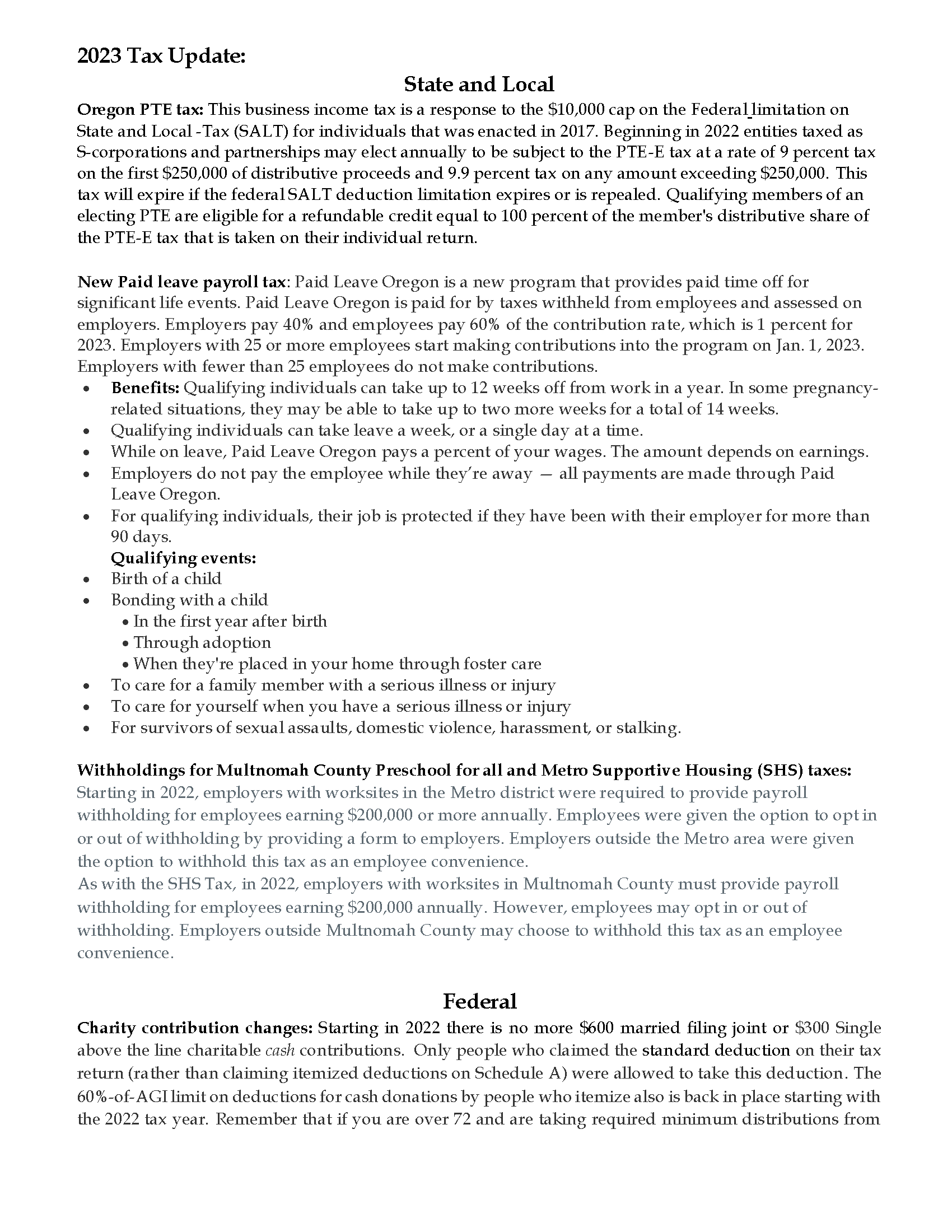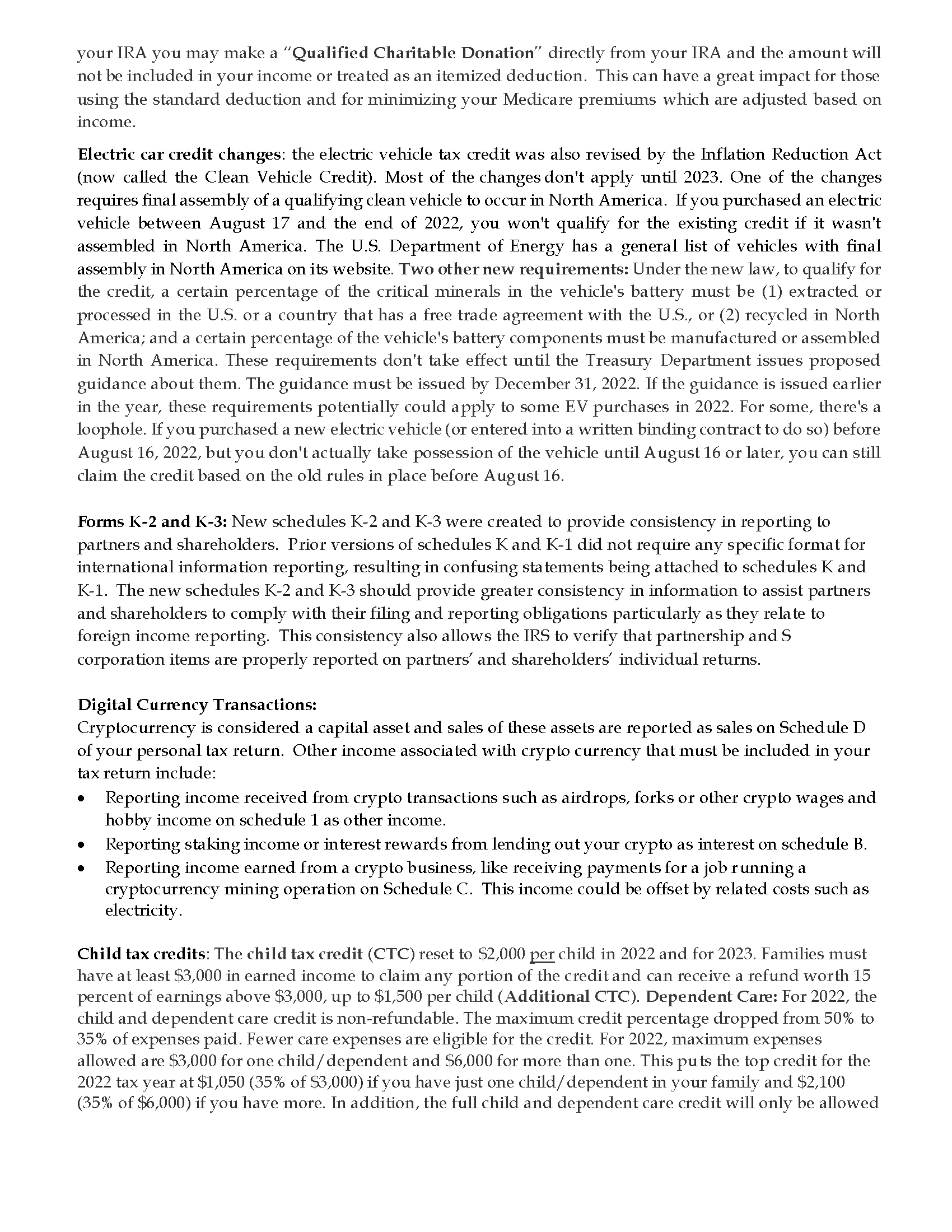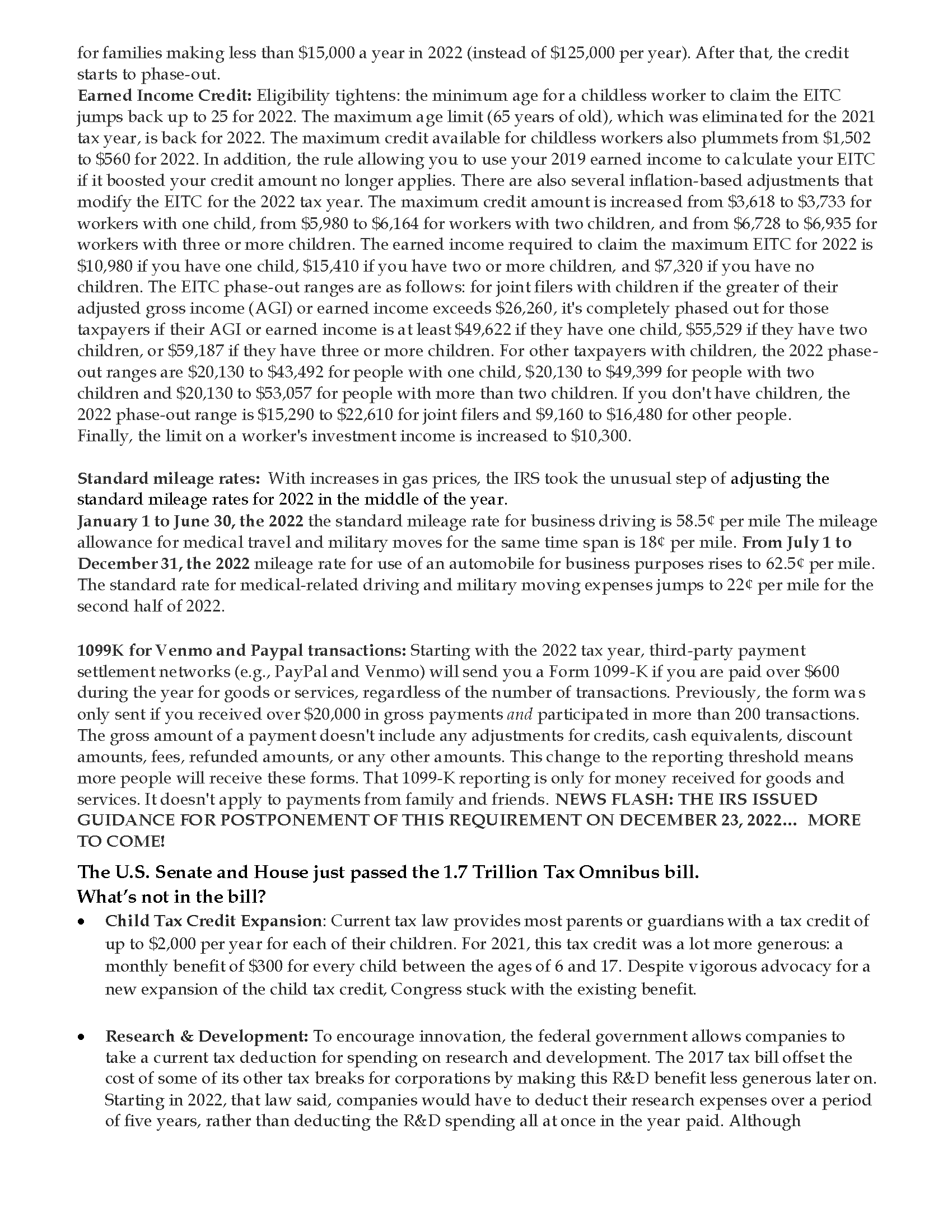At President Donald Trump’s direction, the IRS has pushed both the deadline for payments and the filing deadline out for three months to July 15 because of the coronavirus outbreak. Social distancing makes it hard to gather needed
documents or confer with accountants to meet the April 15 deadline. Various states executive orders requiring business shutdowns and individuals to “stay-at-home” have slowed down the pace of tax preparation services. Further,
services like the Volunteer Income Tax Assistance clinics which help low-income people file returns have been curtailed or closed. IRS Taxpayer Assistance Centers also have all face-to-face service throughout the country officially
shutting the doors.
Treasury Secretary Steve Mnuchin urged people to file as soon as possible. The feds are trying to pump as much money into the economy as possible amid dire economic predictions over the global pandemic.
2019 standard business mileage rate is 58 cents per mile, 20 cents per mile for medical miles, and 14 cents for charity miles. Beginning on January 1, 2020, the standard mileage rates for the use of a car (also vans, pickups
or panel trucks) will be:
· 57.5 cents per mile driven for business use, down one half of a cent from the rate for 2019,
· 17 cents per mile driven for medical or moving purposes, down three cents from the rate for 2019, and
· 14 cents per mile driven in service of charitable organizations.
· Increase in the FICA maximum taxable wages for 2020 to $137,700, maximum tax $8,537.40 per year.
· The penalty for individuals that do not have healthcare insurance has been repealed.
IRS audit rates decreased in 2019. Part of the decline was related to the government shut down, but here are some items that could attract attention:
· Taking higher-than-average itemized deductions.
· Writing off alimony. Alimony paid pursuant to post-2018 divorce or separation agreements isn’t deductible.
· Claiming large charitable deductions. Taxpayers must satisfy substantiation requirements, such as filing Form 8283 for noncash donations over $500 or getting an appraisal for high value gifts.
Section 199A news: this tax provision was enacted in 2018 with many unresolved issues and open items related to rental activity. Safe harbor rules clear up some uncertainty:
· At least 250 hours must be devoted to the rental activity by the taxpayer, employees or independent contractors in a year. For realty owned four years or more, the 250-hour requirement must be satisfied in three of the five
most recent years
· Time spent on repairs and maintenance, tenant services, property management, advertising, collecting rents, negotiating leases and supervising workers counts towards the hours requirement. Arranging financing, constructing
long-term capital improvements, and driving to and from the real estate aren’t included in the 250-hour standard.
· Users of the safe harbor must meet strict recordkeeping requirements. Contemporaneous records must detail hours, dates, descriptions of the services, and who performed them. If the services are done by contractors or employees,
the taxpayer must keep logs of the work done by them, as well as proof of payment.
· Taxpayers must attach a statement to their tax return for each year in which they use the safe harbor. See Rev. Proc. 2019-38 for what to include.
· Special rules apply to taxpayers who own multiple rental properties. They can treat each property separately or they can aggregate similar rental activities into commercial or residential categories. Commercial real estate
can be aggregated only with other commercial.
Charitable giving~ if you are over 70 ½ and are taking required minimum distributions (RMD) from an IRA, consider a direct transfer to your favorite charity. The RMD amount transferred to the charity will not be included in your
income, thus keeping your income lower. This can impact your Medicare premiums. With the larger standard deduction, charity donations made from outside your IRA may not reduce your overall taxable income, but the direct transfer
can save you tax dollars, keep Medicare premiums down and benefit your favorite charity.
Bitcoins anyone?? The IRS has addressed selling, trading and receiving cryptocurrency and calculating gain or loss on these transactions. Revenue Ruling 2019-24 addresses basis calculations tax consequences when the currency
is split into two as a result of certain software changes, (commonly referred to as a hard fork) and donating or gifting virtual currency. The Rev rule also addresses tax return reporting and recordkeeping.
What’s up with Oregon?
Oregon’s new CAT tax
On May 16, 2019, Governor Kate Brown signed House Bill 3427 into law. The Corporate Activity Tax (CAT) is in addition to the state’s current corporate income tax. Revenue from the CAT will be transferred to the Fund for Student
Success and will be used for education spending. The CAT is applied to Oregon taxable commercial activity in excess of $1 million. The tax is computed as $250 plus 0.57% of Oregon commercial activity of more than $1 million.
Only taxpayers with more than $1 million of taxable Oregon commercial activity will have a payment obligation.
The CAT rate of 0.57% will be applied to the net Oregon commercial activity which is calculated as follows:
Oregon gross receipts delivered to or benefit received in Oregon less the greater of
· 35% of apportioned cost inputs or
· 35% of apportioned cost of labor
· $1,000,000 annual exemption
Unitary groups that are commonly owned (>50%) will file a single return. They will only get one $1 million annual exemption, and intercompany transactions among the group will be eliminated. It is likely that the federal attribution
rules will apply in determining the common ownership of unitary entities. (Lineal descendants are considered 1 person.)
There is nothing in the law that precludes a taxpayer from passing on the tax to their customer. It is not yet clear what the rules will be regarding calculating the tax on an invoice.
OregonSaves coming to a business near you: Oregon has been rolling out the new OregonSaves program. The program requires companies that do not offer an employee retirement plan to enroll employees in this state sponsored plan.
Employees are free to opt out of the program to avoid automatic enrollment. Employees participating in the program will have funds, which are withheld by their employer from their wages, deposited into a Roth IRA account that
will follow them when they change employment. Investment options include
· OregonSaves Capital Preservation Fund: 100% invested in the State Street Liquid Reserves Fund (Ticker: SSIXX)
· OregonSaves Target Retirement Funds, 100% invested in the State Street Target Retirement Funds – pick your fund based on your target retirement date (from 2015 to 2065)
· OregonSaves Growth Fund: 100% invested in the State Street Equity 500 Index Fund (Ticker: SSSYX)
Coming soon … Family and Medical Leave Insurance:
· Starting January 2022 employers and employees will be required to make contributions to the fund. Employee amounts will be withheld from pay and remitted by employers
· The combined employer and employee amount is capped at 1% of wages
· Eligible for family leave, medical leave, safe leave.
Other states:
Wayfair ruling and sales and use tax.
The recent U.S. Supreme Court ruling in the case South Dakota v. Wayfair, Inc. affects where some businesses must file and pay sales and use tax. States are still making changes to their laws and filing requirements.
And as in past years…
1) Tax scams: The IRS continues to hear from taxpayers who have received unsolicited calls from individuals demanding payment while fraudulently claiming to be from the IRS. Here are five common things to look for to avoid getting
scammed:
The IRS will never
· Call you about taxes you owe without first mailing you an official notice.
· Demand that you pay taxes without giving you the opportunity to question or appeal the amount they say you owe.
· Require you to use a specific payment method for your taxes, such as a prepaid debit card.
· Ask for credit or debit card numbers over the phone.
· Threaten to bring in local police or other law-enforcement groups to have you arrested for not paying.
2) IRS policy is to send taxpayers a letter when they find a suspicious tax return that has indications of identity theft but contain legitimate taxpayer’s name and/or Social Security number. Victims may now ask for redacted
copies of fraudulent returns. Responses may take quite a bit of time, especially if your identity theft case hadn’t yet been resolved at the time of your request. It could take three months before you get the return or a request
for further information from the IRS. This program is available only for individual returns. Businesses are not able to get copies of false returns filed under their tax ID numbers.



